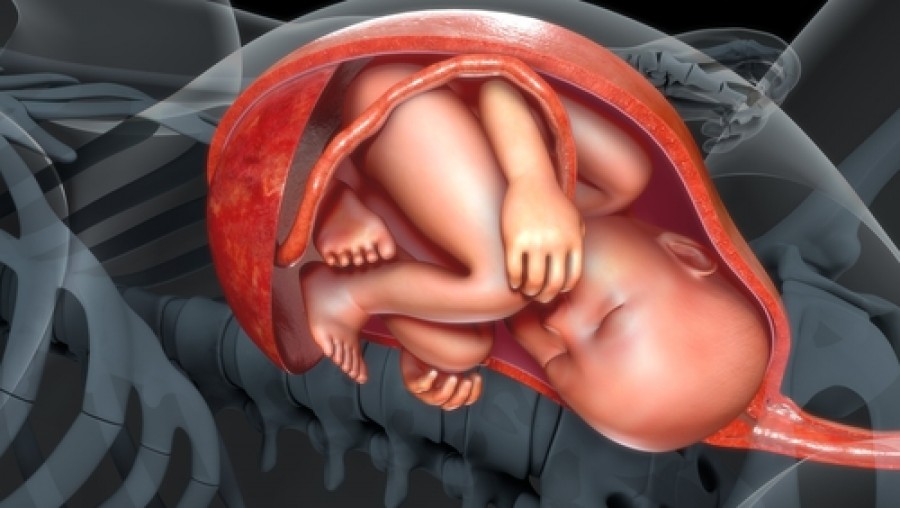Complications of the Placenta

For most women and their bubs, pregnancy goes fairly smoothly without any serious issues or complications. However, even with most pregnancies being complication-free, there are a ton of potential problems that could go wrong. Amongst those problems are complications of the placenta which can be especially scary.
What is the Placenta?
In the very beginning of pregnancy, a large organ begins to develop in the uterus. This organ is known as the placenta and is completely vital to pregnancy. It attaches to the wall of the uterus usually low in the uterus but ends up moving up higher as the uterus grows throughout pregnancy. By the end of pregnancy, the placenta grows to be approximately 22 centimeters across and weighs roughly 500 grams or so. The placenta plays a critical role in pregnancy as it filters the pregnant mother’s blood in order to deliver vital nutrients and oxygen to the baby through the umbilical cord that connects the baby to the placenta.
How Does the Placenta Work?
For the placenta to do its job, blood from the pregnant mother flows into it where it then filters the blood to take oxygen, energy and nutrients from the mother’s blood and then delivers it to the baby through the umbilical cord. The umbilical cord then returns the baby’s blood to the placenta where it is filtered and carbon dioxide and other waste products are removed from the blood before oxygen and nutrients are added and it’s sent back through the umbilical cord again to the baby.
What Happens to the Placenta After Birth?
Once your baby is born, your uterus will continue to contract while the placenta separates from the wall of the uterus. During this final stage of labour, you will birth your placenta. It’s typically much faster, easier and less painful than the birth of your baby so there is no reason to worry about this part of giving birth. Once your placenta does come out, your pregnancy health care provider will typically examine it to ensure that nothing is left behind in your womb that may cause infection. It is completely up to you what happens to your placenta at that point. Many women choose to just have their placenta disposed of, but some mums prefer to save the placenta for the purpose of consumption.
Consuming the Placenta
Consuming the placenta can sound bizarre and just plain gross to some but there is speculation that it may be beneficial to health and some believe that it can reduce the risk of postnatal depression. All other mammals eat their placentas after their babies are born. The mothers that choose this practice may choose to cook and eat the placenta, or many choose to have a midwife, doula or other professional encapsulate it for them so they can consume it in the form of pills rather than just eating it. To do this, they dehydrate the placenta, ground it into powder and then put the powder into pills.
4 Common Complications of the the Placenta
1. Placenta Praevia
Placenta praevia is one of the potential placental complications during pregnancy. In placenta praevia, the placenta remains low in the uterus either partially or completely covering the cervix rather than moving up higher on the wall of the uterus like it typically would. This can cause severe complications during labour and birth and is the number one leading cause of haemorrhage in the postnatal period.
- Signs of Placenta Praevia
During your 20-week scan, the position of your placenta should be checked which is the best way to diagnose placenta praevia. In addition to checking with the scan, there can be other symptoms that suggest you may have placenta praevia. Bleeding from the vagina without pain, especially after sex is a sign of placenta praevia. Other symptoms of placenta praevia are cramping accompanied by vaginal bleeding and vaginal bleeding during labour. - Treatment of Placenta Praevia
If at your 20-week scan your placenta is still low in your uterus, you will likely be scheduled to get another scan later on, closer to your due date. If your placenta is still low and covering your cervix, you may require a caesarean section. Whether you need a caesarean section or not will depend on the grade of placenta praevia. It is measured by grade between grade 1 and grade 4. A woman with a grade 1 or even 2 placenta praevia may still be eligible for a vaginal birth, while with a grade 3 or 4 placenta praevia, it’s safer to go the route of a C-section. Since haemorrhage is a big risk with placenta praevia, a blood transfusion may also be required.
2. Placenta Accreta
Another possible complication of the placenta during pregnancy is placenta accreta, sometimes also known as placenta increta or placenta percreta depending on the severity of the condition. It’s a condition where the placenta attaches itself too far into the wall of the uterus.It’s very rare only occurring in 1 of about 2,500 pregnancies, and is thought to occur due to a defect of the deciduas basalis, which is the layer of tissue that separates the uterus from the placenta. The biggest concern is that the placenta won’t properly detach itself once the baby is born. It can lead to very severe bleeding and is life-threatening.
- Symptoms of Placenta Accreta
Placenta accreta doesn’t typically cause any obvious symptoms in the affected woman. However, bleeding during the final weeks of pregnancy may occur with placenta accreta. It is typically diagnosed during a routine scan. - Treatment of Placenta Accreta
There are a few different treatment options for placenta accreta. One is that the placenta is manually removed. This way of treatment is rarely used because it increases the chance of extreme bleeding and death. Another way that placenta accreta may be treated is to simply wait and see if the placenta will basically be absorbed by the body. This can also be dangerous as it can lead to severe bleeding and/or infection. Unfortunately, the most effective way of treating placenta accreta is a hysterectomy which will leave the woman unable to have future children.
3. Placental Abruption
Placental abruption is another possible complication of the placenta where the placenta detaches itself from the wall of the uterus before the delivery of the baby. It is extremely dangerous as the baby gets all of its oxygen and nutrients through the placenta as well as because it can cause severe blood loss. It is a condition that occurs in about 1% of pregnancies.
- Symptoms of Placental Abruption
The main symptom of placental abruption is vaginal bleeding and it may be accompanied with sudden back or abdominal pain. Most abruptions of the placenta can be detected and diagnosed by an ultrasound scan. - Treatment of Placental Abruption
Treatment of placental abruption depends on the severity of the abruption as well as how far along you are in your pregnancy. If you have a minor abruption, your pregnancy health care provider will most likely want to monitor you very closely and you may need to stay in the hospital until delivery. If you are close enough to term with a minor abruption, your pregnancy health care provider may recommend induction or a C-section. If you have a severe abruption, you will most likely need to have a C-section to give you and your baby the best chance at the best possible outcome.
4. Retention of the Placenta
After your baby is born, the placenta should detach itself from the uterus and exit your body. When this doesn’t occur properly and the placenta remains in your uterus, it is called retention of the placenta. This can happen when the placenta doesn’t separate from the uterus or only partially separates from the uterus. It may also happen even if the placenta does properly separate from the uterus but the cervix closes before the placenta exits the body. The biggest concern with retention of the placenta is haemorrhage and/or infection.
- Symptoms of Retention of the Placenta
Symptoms of retention of the placenta are very obvious. The placenta doesn’t exit the body as it should shortly after birth. Severe bleeding may occur. - Treatment of Retention of the Placenta
The treatment of retention of the placenta may vary. If bleeding is minor, your health care provider may wait and give your placenta the chance to come out on its own. If this is the case, you may want to try some simple things that could possibly aid in the placenta exiting your body. Things you can try are having someone massage your lower back, emptying your bladder, and nipple stimulation such as breastfeeding. If none of this is working after a prolonged period of time or if bleeding is severe, your health care provider will likely intervene in one or more ways. These ways may include an injection of oxytocin and attempting to remove the placenta manually.
Try to Keep You, Your Baby, and Your Placenta Healthy
Unfortunately, with most complications of the placenta, there isn’t much you can do to avoid them. The best thing to do is to seek appropriate treatment if you think you may be having a complication of the placenta and do your best to keep yourself as well as your baby and placenta healthy by eating a healthy pregnancy diet and exercising appropriately throughout your pregnancy. You should also avoid dangerous substances such as cigarettes or alcohol. As long as you do your best to remain healthy and seek treatment when needed, you and your bub should be just fine.


